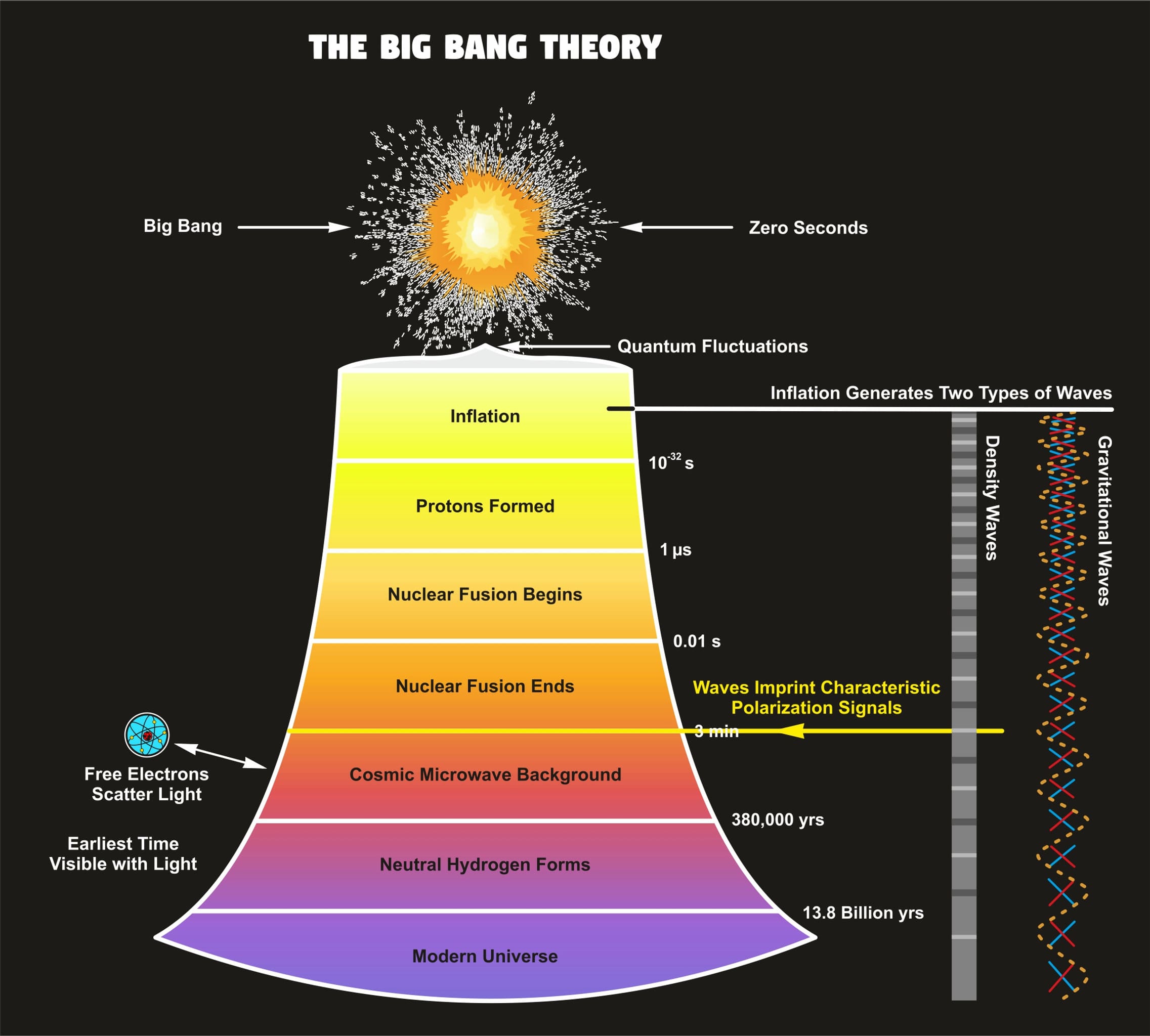In this post
The Big Bang theory has been developed by scientists to explain the way in which the universe came into existence. Discoveries and observations made in physics and astronomy have suggested that the galaxies are moving away from each other and that the universe is expanding. From these observations scientists have concluded that something powerful must have happened to start the movement, and devised the Big Bang theory.
The Big Bang theory states that initially all of the matter in the universe was concentrated together in a single point in space. This point was known as a ‘singularity’. This singularity then began to rapidly expand around 13.7 billion years ago. The matter contained in the singularity started to expand and spread out to create the universe. Observations made by physicists and astronomers show that this expansion is still continuing today. The Big Bang theory is the best theory that we have. The new discovery of new evidence through the development and advancing of technology will allow this theory to be developed. The main arguments in favour of the Big Bang theory include:
- Observations have shown that galaxies are moving away from each other and from one another in all directions equally. This suggests that the universe is continuing to expand in all directions equally.
- Observations have also shown that the further a galaxy is away from us, the faster it is travelling away. This suggests that there must be a central point from which the expansion first started.
Evidence for the Big Bang theory
There are two main pieces of evidence which support the Big Bang theory.
Cosmic microwave background radiation
Scientists detected microwaves on Earth which have been received from space. Scientists called this cosmic microwave background (CMB) radiation, and this is the first form of evidence supporting the Big Bang theory. This radiation is uniform and does not have many fluctuations in strength. It comes to Earth equally from every direction in space.
As the CMB radiation detected is so uniform in all locations and emitted from every direction, scientists have deduced that it is the remains of the energy created when the expansion of the universe began.
When we look at white light, we can split this in a prism to show the different colours that make it up. These colours will all be in equal amounts for pure white light but it is quite rare that we see this in nature. In fact, the light that comes from stars does not have the full rainbow – instead it has dark lines where there is no colour. This is because at certain frequencies (represented by the colour in the rainbow) light will be absorbed by materials in the star. This means that each star has a unique spectrograph which is made from the particles it burns.
The second piece of evidence is known as red-shift and can be explained using the Doppler effect.



